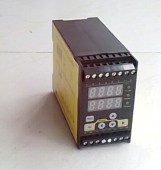| Guidance 指路人 g.yi.org |
software / RapidQ / RQ Doc / html / gotos.html |
|
Introduction to BranchingWhat are labels? Before talking about GOTOs and GOSUBs, you'll need to understand what labels are. You can think of them as bookmarks, they don't actually do anything, but you can use labels as a guide. The following are valid labels:
Label1:
100
10.5
A label always appears as the first statement and can be any number or a named
label. A named label must end with a colon : symbol.
After any label, you can write your code as before.
Label1:
PRINT "some code..."
100 PRINT "more code"
10.5
PRINT "yet more code"
The formatting above is just an example, it doesn't mean that a named label can't have
code on the same line.
Branching with GOTO Perhaps the most shunned upon keyword in BASIC is the GOTO statement. Obviously if you programmed in BASIC before, GOTO was used almost everywhere. This is because GOTO was so easy to understand, and when we first jump into programming, we don't usually pick up what subroutines and functions are. Rapid-Q still supports GOTO, but we definitely don't encourage its use, at all. In fact, if you find yourself using it now, you'll probably wonder why in a few years/months as you become more experienced. Here's an example of using GOTO:
IF I = 100 THEN GOTO 10 ELSE GOTO 20
10 PRINT "I = 100"
END
20 PRINT "I is not 100"
END
If it's so terrible, are there any penalties in its use?
No. In fact, it's probably the purest command you'll find. All it does is skip
instructions, so in the above example, if I = 200, then the lines
10 PRINT "I = 100"
END
are skipped. GOTO requires no stack or memory consumption, unlike GOSUB and
SUBs or FUNCTIONs. If you want to think about assembly, that's basically
all you do, branch here and there, but since BASIC is a high level language,
we usually don't like to think that way, so we avoid using GOTO if possible.
Branching with GOSUB .. RETURN Using GOSUB is actually more useful than using GOTO, but still not recommended. It is in essence, calling a SUB without parameters. What it provides is a quick "hack" without creating SUBs. It is often used in loops, as you may see here:
DO
DO
A$ = INKEY$
LOOP UNTIL LEN(A$)
IF A$ = "A" THEN
GOSUB 100
ELSEIF A$ = "B" THEN
GOSUB 110
ELSEIF A$ = "C" THEN
GOSUB 110
END IF
LOOP
END
100 PRINT "A pressed"
RETURN
110 PRINT "B pressed"
RETURN
120 PRINT "C pressed"
RETURN
The RETURN statement is used to jump back to the previous call of GOSUB.
You can think of GOSUB as a GOTO statement with a marker, and the RETURN statement as another
GOTO statement that returns to that marker.
|
| ||||||||||||||||||||
| © Wed 2025-7-2
Guidance Laboratory Inc. Email:webmaster1  g.yi.org Hits:0 Last modified:2015-12-25 19:42:25 g.yi.org Hits:0 Last modified:2015-12-25 19:42:25
|
 |
|||
|
|
 搜索
搜索 论坛
论坛 Home
Home 回顶部
回顶部







